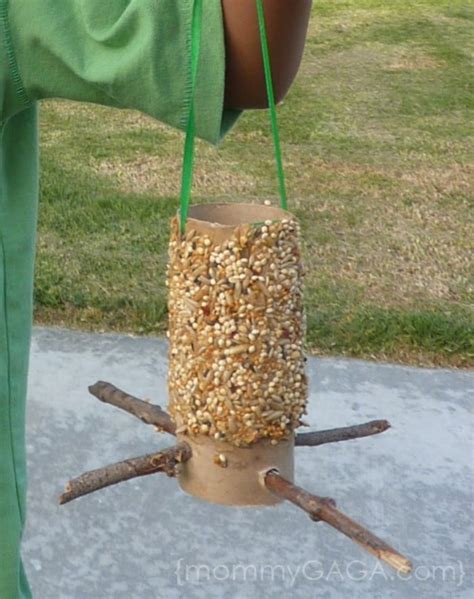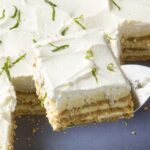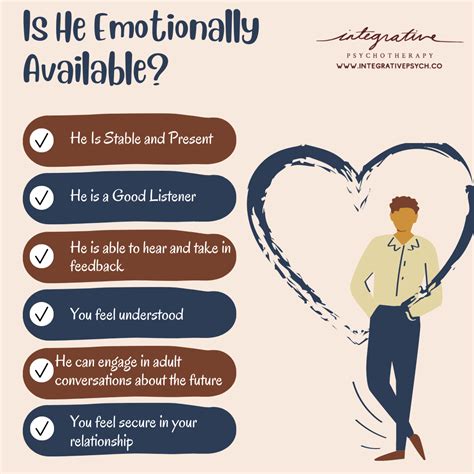
Transform empty toilet paper rolls into DIY bird feeders to attract feathered friends to your backyard with this simple and eco-friendly hack. By coating the cardboard tubes with peanut butter and birdseed, homeowners can create a readily accessible food source, especially beneficial during colder months when natural food sources are scarce.
For bird enthusiasts looking to enhance their backyard’s appeal to avian visitors, repurposing household waste offers a sustainable and cost-effective solution. According to experts, creating a bird feeder from an empty toilet paper roll is a straightforward process that requires minimal materials: an empty toilet paper roll, peanut butter (or a similar nut-free alternative), birdseed, and a piece of string or twine.
“It’s such an easy and fun activity, and the kids can help, too,” says the original article. The process begins by evenly spreading peanut butter across the entire surface of the toilet paper roll. The peanut butter acts as an adhesive, ensuring the birdseed sticks to the cardboard. Next, the coated roll is thoroughly covered in birdseed, creating a textured, edible surface. Finally, a string or twine is threaded through the tube to hang the feeder from a tree branch or other suitable location.
This method provides several advantages. Firstly, it repurposes waste material, reducing the amount of cardboard ending up in landfills. Secondly, it offers a readily available food source for birds, particularly crucial during periods of food scarcity, such as winter. Thirdly, it’s an engaging and educational activity, suitable for families and individuals of all ages.
Beyond the basic construction, there are several ways to customize and enhance the toilet paper roll bird feeder. For instance, using different types of birdseed can attract a wider variety of bird species. Sunflower seeds, nyjer seeds, and mixed birdseed blends each cater to different dietary preferences. Furthermore, adding dried fruit pieces or nuts can provide an extra boost of energy and nutrients.
The location of the bird feeder is also a crucial factor in its success. Hanging the feeder in a sheltered area, away from strong winds and direct sunlight, can help preserve the birdseed and make it more accessible to birds. Additionally, placing the feeder near natural cover, such as trees or shrubs, provides birds with a safe haven from predators.
Maintaining the bird feeder is essential to ensure the health and safety of the birds that visit it. Regularly cleaning the feeder with warm, soapy water can prevent the spread of disease and remove any mold or bacteria that may have accumulated. It is also important to replace the birdseed regularly, especially after periods of rain or snow, to prevent it from becoming damp and moldy.
According to ornithologists, providing supplemental food for birds can have a positive impact on their populations, especially during periods of stress, such as migration and breeding. However, it is important to do so responsibly, ensuring that the food provided is safe and nutritious and that the feeders are kept clean and well-maintained.
The toilet paper roll bird feeder is just one example of the many ways that individuals can contribute to bird conservation efforts. By creating a bird-friendly habitat in their backyards, homeowners can provide birds with food, water, shelter, and nesting sites, helping to support their populations and promote biodiversity. Other actions, such as planting native trees and shrubs, reducing pesticide use, and providing a source of clean water, can further enhance the habitat and attract a wider variety of bird species.
Creating these feeders also presents opportunities for observation and learning. Birdwatchers can observe the different species that visit the feeder, noting their behaviors, feeding preferences, and interactions with each other. This can provide valuable insights into the local bird community and the ecological relationships that exist within it.
One potential concern associated with bird feeders is the risk of attracting unwanted pests, such as rodents and insects. To minimize this risk, it is important to keep the area around the feeder clean and free of spilled birdseed. Using a bird feeder with a tray or baffle can also help to prevent birdseed from falling to the ground.
Another consideration is the potential impact of bird feeders on bird behavior. Some studies have suggested that providing supplemental food can make birds less reliant on natural food sources and alter their foraging patterns. However, other studies have found that bird feeders have little or no impact on bird behavior, especially when natural food sources are abundant.
Overall, the benefits of providing supplemental food for birds generally outweigh the risks, especially when done responsibly. By creating a toilet paper roll bird feeder and following the guidelines outlined above, homeowners can provide birds with a valuable source of food and contribute to their conservation.
The accessibility and simplicity of this project make it particularly appealing. Unlike complex or expensive bird feeders, the toilet paper roll version requires minimal resources and effort. This makes it an ideal activity for families, schools, and community groups looking to engage in environmental stewardship.
Furthermore, the project promotes environmental awareness and encourages participants to think creatively about waste reduction and resource repurposing. By transforming an everyday household item into a useful and beneficial object, individuals can gain a greater appreciation for the value of sustainable practices.
The success of a toilet paper roll bird feeder also depends on the quality of the materials used. While peanut butter is a popular choice for adhering birdseed, it is important to ensure that it is free of additives, such as xylitol, which can be toxic to birds. Alternatively, other nut butters or even vegetable shortening can be used as a substitute.
Similarly, the type of birdseed used can influence the types of birds that are attracted to the feeder. Sunflower seeds are a favorite of many birds, including cardinals, chickadees, and finches. Nyjer seeds are particularly attractive to finches, while white millet is preferred by ground-feeding birds, such as doves and juncos.
The durability of the toilet paper roll bird feeder can be extended by wrapping it in a layer of plastic wrap or wax paper before applying the peanut butter and birdseed. This will help to protect the cardboard from moisture and prevent it from deteriorating quickly. Alternatively, a more durable material, such as a small section of PVC pipe, can be used in place of the toilet paper roll.
In addition to providing food, bird feeders can also serve as a valuable tool for monitoring bird populations. By regularly observing the birds that visit the feeder, birdwatchers can track changes in species abundance and distribution over time. This information can be used to assess the health of bird populations and identify potential threats, such as habitat loss and climate change.
The act of creating and maintaining a bird feeder can also be a deeply rewarding experience. It provides an opportunity to connect with nature, observe wildlife up close, and contribute to the well-being of the environment. Whether you are a seasoned birdwatcher or a novice naturalist, building a toilet paper roll bird feeder is a simple and satisfying way to enhance your backyard and support local bird populations.
The principles behind this simple feeder can be expanded upon for more advanced projects. For instance, one could create a larger, more elaborate feeder using recycled materials such as plastic bottles, tin cans, or wooden scraps. These projects offer an opportunity to further explore sustainable practices and express creativity.
It is important to note that while bird feeders can provide a valuable source of food for birds, they should not be considered a substitute for natural habitat. Birds need a variety of resources, including food, water, shelter, and nesting sites, to thrive. Therefore, it is essential to create a holistic bird-friendly habitat in your backyard by planting native trees and shrubs, providing a source of clean water, and reducing pesticide use.
The toilet paper roll bird feeder is a gateway to a deeper understanding of avian ecology and conservation. By engaging in this simple activity, individuals can develop a greater appreciation for the natural world and become more active participants in protecting it.
The impact of small-scale efforts, like crafting a homemade bird feeder, contributes significantly when scaled across communities. Increased awareness about local species, coupled with readily available food sources, aids in biodiversity preservation, particularly in urban environments where natural habitats are fragmented. Furthermore, the educational aspect of these projects fosters a sense of responsibility and encourages pro-environmental behaviors among younger generations. The accessible nature of this activity bridges the gap between theoretical knowledge and practical action, promoting a hands-on approach to ecological stewardship. The ripple effect of such initiatives extends beyond individual backyards, creating a more vibrant and sustainable ecosystem for both birds and humans alike.
The long-term effects of supplementing bird diets are a subject of ongoing research. While it undoubtedly provides immediate benefits during harsh conditions, the potential for altering natural foraging behaviors requires careful consideration. Responsible bird feeding entails maintaining cleanliness to prevent disease transmission, selecting appropriate food types to meet nutritional needs, and avoiding over-reliance on feeders to encourage natural foraging. By adhering to these guidelines, we can ensure that our efforts to support bird populations contribute positively to their overall health and resilience. The practice of observing bird behavior at feeders also provides valuable data for citizen science initiatives, contributing to a broader understanding of avian ecology and informing conservation strategies.
The seasonality of bird feeding is another crucial aspect to consider. While providing supplemental food during winter months can be vital for survival, it is equally important to adjust feeding practices during the breeding season. Birds require a diet rich in protein and insects during this period to support the growth and development of their young. Over-reliance on seeds and grains can lead to nutritional deficiencies and negatively impact breeding success. Therefore, it is advisable to reduce or discontinue feeding during the breeding season to encourage natural foraging and ensure that birds are obtaining the optimal diet for their needs. Furthermore, the timing of migration can be influenced by supplemental feeding, potentially disrupting natural migratory patterns. Careful observation and adaptation of feeding practices are essential to minimize any unintended consequences.
Beyond the practical aspects of building and maintaining bird feeders, it is important to cultivate a deeper understanding of the interconnectedness between birds and their environment. Birds play a vital role in maintaining ecosystem health through pollination, seed dispersal, and insect control. By supporting bird populations, we are also supporting the health and resilience of our natural environment. Educating ourselves and others about the ecological importance of birds is crucial for fostering a sense of stewardship and promoting sustainable practices that benefit both birds and humans alike. The simple act of creating a bird feeder can serve as a catalyst for broader engagement in environmental conservation and inspire a lifelong appreciation for the wonders of the natural world.
The ethical considerations of bird feeding are also worth noting. While it is generally considered a beneficial activity, it is important to avoid creating dependency or altering natural behaviors to the detriment of bird populations. Providing a consistent and reliable food source can attract birds to areas where they may be exposed to other threats, such as predators or window collisions. Therefore, it is crucial to mitigate these risks by providing adequate shelter, installing bird-safe window decals, and maintaining a safe distance from potential hazards. Additionally, it is important to avoid feeding birds foods that are harmful to their health, such as bread or processed foods. By adhering to ethical guidelines and prioritizing the well-being of birds, we can ensure that our efforts to support them are truly beneficial.
The social and community aspects of bird feeding should not be overlooked. Sharing knowledge and experiences with others can foster a sense of connection and collective responsibility for bird conservation. Participating in local birdwatching groups, sharing tips and advice on social media, and organizing community bird feeder projects can all contribute to a stronger and more engaged community of bird enthusiasts. Furthermore, involving children in bird feeding activities can instill a lifelong appreciation for nature and promote a sense of environmental stewardship. By fostering a sense of community and shared purpose, we can amplify our individual efforts and create a more significant impact on bird conservation.
In conclusion, the simple act of creating a toilet paper roll bird feeder offers a multitude of benefits, ranging from providing a valuable food source for birds to promoting environmental awareness and fostering a sense of community. By following responsible feeding practices, mitigating potential risks, and cultivating a deeper understanding of avian ecology, we can ensure that our efforts to support bird populations are truly beneficial and contribute to a healthier and more sustainable environment for all. The project serves as a microcosm of broader conservation efforts, demonstrating that even small actions can have a significant impact when combined with knowledge, responsibility, and a shared commitment to protecting the natural world. The accessibility and adaptability of this project make it an ideal starting point for individuals of all ages and backgrounds to engage in environmental stewardship and contribute to the well-being of our avian neighbors.
Frequently Asked Questions (FAQs)
1. What kind of peanut butter should I use for the toilet paper roll bird feeder?
It is essential to use peanut butter that is free of additives, particularly xylitol, which is highly toxic to birds. Xylitol is an artificial sweetener found in many sugar-free products. Look for natural, unsalted peanut butter with no added ingredients. If you are concerned about allergies or want a nut-free option, you can use vegetable shortening, sunflower seed butter, or another similar spread that is safe for birds. These alternatives should be spreadable and provide a good adhesive surface for the birdseed. Always check the ingredients list carefully to ensure the chosen spread is safe for avian consumption.
2. What type of birdseed is best to use for this feeder?
The best type of birdseed depends on the types of birds you want to attract to your yard. Black oil sunflower seeds are a favorite of many birds, including cardinals, chickadees, and finches. Nyjer seeds are particularly attractive to finches. White millet is preferred by ground-feeding birds such as doves and juncos. A general wild bird seed mix is also a good option, as it contains a variety of seeds that will appeal to a wide range of bird species. Consider researching the common birds in your area and selecting seeds that cater to their specific dietary needs. Providing a variety of seeds can also help attract a greater diversity of birds.
3. How often should I clean the toilet paper roll bird feeder?
It is recommended to clean the bird feeder regularly, ideally every one to two weeks, to prevent the buildup of mold, bacteria, and droppings, which can spread diseases among birds. Remove the feeder from its hanging location. Discard any remaining birdseed. Wash the feeder with warm, soapy water, using a brush to scrub away any debris. Rinse thoroughly with clean water and allow it to dry completely before reapplying peanut butter and birdseed. Regular cleaning helps maintain a healthy feeding environment for the birds and prevents the spread of illness.
4. Where is the best place to hang my toilet paper roll bird feeder?
The best place to hang the feeder is in a sheltered location, away from strong winds and direct sunlight. This will help protect the birdseed from the elements and make it more accessible to birds. Choose a location near natural cover, such as trees or shrubs, to provide birds with a safe haven from predators. Avoid hanging the feeder near windows to prevent bird collisions. Ensure the feeder is easily visible to birds, so they can quickly locate the food source. A height of about 5-6 feet from the ground is generally recommended.
5. How can I prevent squirrels and other pests from eating the birdseed?
Preventing squirrels and other pests from accessing the feeder can be challenging. Several strategies can be employed. Use a squirrel baffle, a dome-shaped or cylindrical barrier that prevents squirrels from climbing up to the feeder. Hang the feeder from a smooth wire or fishing line, which is difficult for squirrels to grip. Consider using birdseed mixes that contain ingredients squirrels dislike, such as hot peppers (capsaicin). Avoid placing the feeder near structures that squirrels can easily jump from. Regularly clean up any spilled birdseed beneath the feeder to minimize attracting pests. Store birdseed in airtight containers to prevent rodents from accessing it. By combining these methods, you can significantly reduce the likelihood of unwanted visitors.









